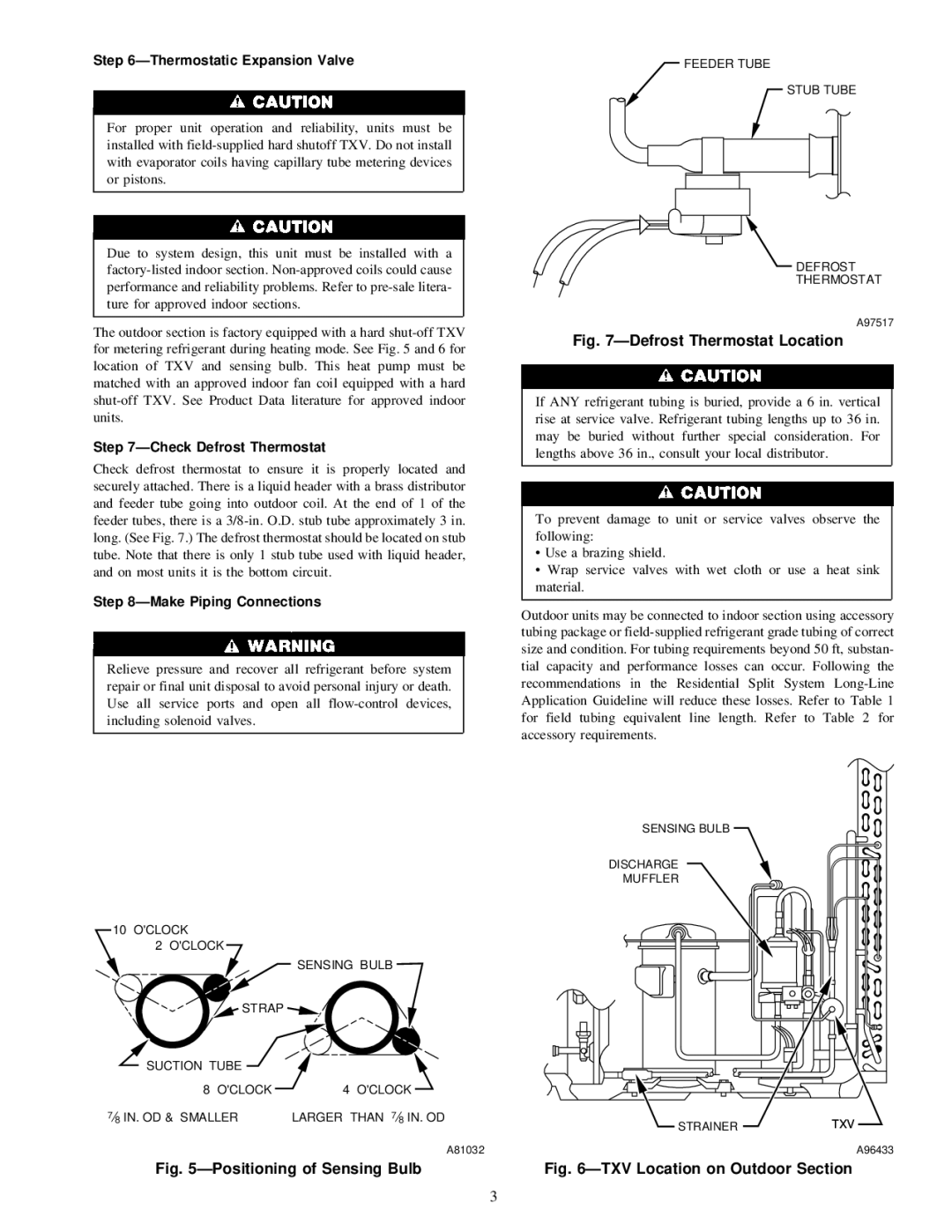38YSA specifications
The Carrier 38YSA is a cutting-edge cooling solution designed to meet the demands of modern residential and commercial applications. Renowned for its energy efficiency and reliable performance, the 38YSA series represents the pinnacle of Carrier’s commitment to innovation in HVAC technology.One of the standout features of the Carrier 38YSA is its energy efficiency. It utilizes advanced inverter technology, allowing it to adjust its cooling output based on the specific needs of the indoor environment. This technology not only reduces energy consumption but also minimizes fluctuations in temperature, providing a more consistent and comfortable living or working space. The unit achieves impressive SEER (Seasonal Energy Efficiency Ratio) ratings, making it an environmentally friendly choice.
The 38YSA is equipped with a variable-speed compressor, which optimizes performance by operating at different speeds. This capability allows the system to ramp up or down in accordance with the cooling load, ensuring optimal comfort and minimizing energy usage. This technology also translates to quieter operation, making the 38YSA ideal for residential neighborhoods and low-noise environments.
In terms of features, the Carrier 38YSA incorporates smart controls that can be operated remotely via mobile devices. This feature provides users with the flexibility to manage their cooling systems from anywhere, optimizing comfort while on the go. The user-friendly interface allows for easy programming of temperature schedules, further enhancing energy savings and comfort.
Durability is another characteristic that sets the Carrier 38YSA apart. The unit is engineered with robust materials and components designed to withstand harsh weather conditions. Its corrosion-resistant casing and high-quality condenser coils ensure longevity and reliable performance over the years.
Furthermore, the 38YSA is designed with eco-friendly refrigerants, contributing to a reduction in global warming potential, which aligns with increasing environmental regulations. The commitment towards sustainability is evident in Carrier’s entire product line, emphasizing the importance of creating energy-efficient and eco-conscious cooling systems.
Overall, the Carrier 38YSA is a sophisticated and efficient cooling solution, integrating advanced technologies to deliver optimal comfort, reliability, and energy savings. Its blend of innovative features, durable design, and environmental responsibility makes it a top choice for anyone seeking effective air conditioning solutions.

